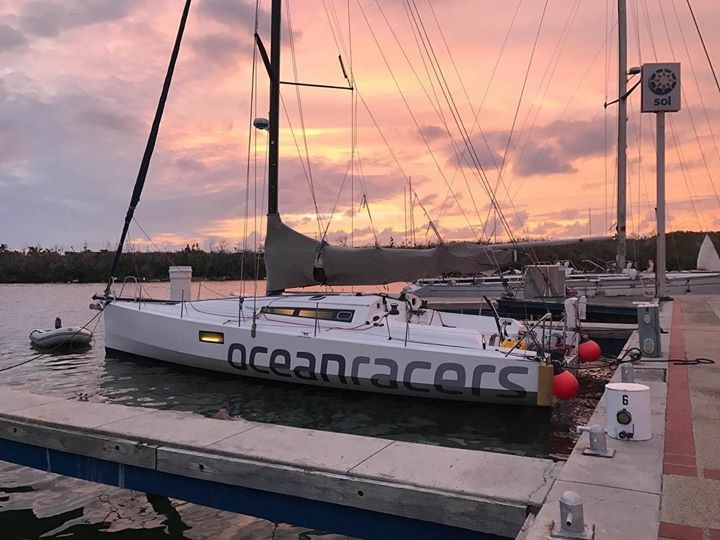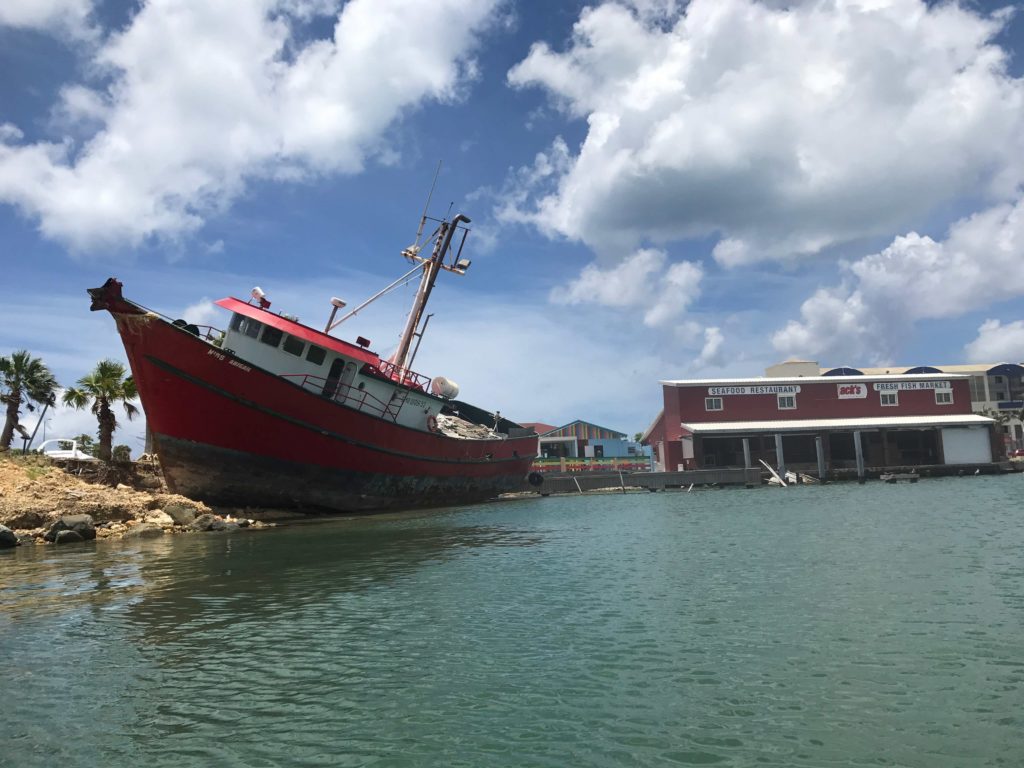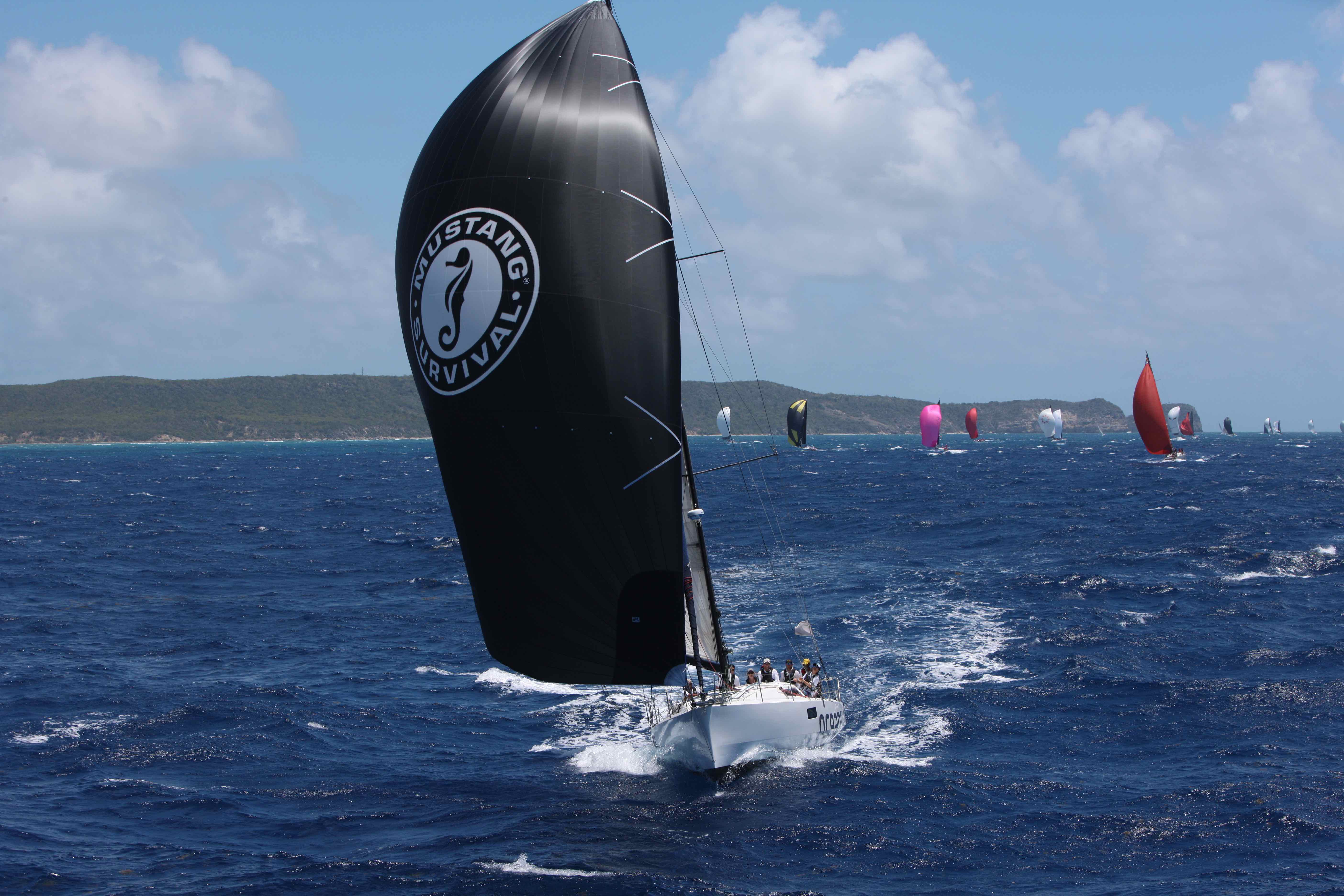Beached boats and debris beaches. Marinas that fell from grace, and those that rose from the ashes. Closed businesses, and open ones with no one to enjoy them. The US and British Virgin Islands had a tough recovery season, but a full come back wasn’t possible unless people… well… came back. (Read Part 1 here)
By the time we got to St Maarten and St Barths, we again saw a different kind of recovery. Cruisers came back to St Maarten for essentials, while yachties came back to St Barths for a piece of preserved paradise.
St Barths
St Barths was an island that also got hit hard by Hurricane Irma, but pulling into Gustavia you couldn’t really tell. Everything was perfect, almost untouched. The store fronts of Dolce & Gabana, Hermès, Richard Mille and other high-end brands gleaned pristine, maybe even brand new. Nikki Beach was reopened just in time for Les Voiles de St Barths, which made it seem like it was just a perfect set change between seasons.
It was clear that no expense was spared to make St Barths look like the paradise it always was. Look further than the race village and you’d see that the lush terrain was missing, but there’s no need to look any further… The regatta pulled out the red carpet at Gustavia Harbour — mood lighting, a circular centerpiece bar, white canopies, champagne lounge, jumbo screens, fireworks and a private concert by Jimmy Buffett.
The crew party was until the early hours on Shell Beach, serenaded by the sexy sounds of Jimmy Sax. Meanwhile on Lay Day, Nikki Beach served Magnum bottles to the Maxi crews whose owners stacked up and picked up million € tabs. The island’s recovery efforts could have probably been covered by taxes on those tables alone! But it’s a tax-free French island, and was obviously faring quite differently than its cousin St Martin.
St Maarten/Martin
Before Les Voiles de St Barths we briefly made a pit stop in St Maarten, and after we were back again to do repairs. Regrettably we weren’t able to make it to the St Maarten Heineken Regatta this year, but our buddy boats tell us that despite the devastation, the organizers still put on a great event. When we finally made it to St Maarten in April, we saw that an international regatta would have certainly been a major accomplishment.

Surrounding Simpson Bay, landmarks from last season were skeleton placeholders, you could see through to the beach from the bay. Simpson Bay itself was a minefield, a multi-million-dollar graveyard for boats, with far too many ironically named “Dream.” The Soggy Dollar was empty on a Saturday Night, and the Simpson Bay Strip was much more tame than usual.
But between the sunken boats and blown out buildings were the business and boats that were still afloat. There was still plenty of life around and the marine business was BOOMING! Guys at Island Water World and FKG said they hadn’t had a day off since before the Hurricanes. Despite the IGY Marinas being in disrepair, the convenience of all-you-can-need marine shops just a dingy ride away brought a lot of boaters back to the lagoon.
I really wondered how St Maarten was faring as news from the island after the Hurricane sounded apocalyptic. While it didn’t look far from post-apocalyptic, the people were getting along better than you’d imagine from initial reporting. The news reported of prison outbreaks, looting and anarchy in the streets. I was lucky enough to hear a firsthand account from a local and environmental activist, Tadzio Bervoets, of what really happened in St Maarten.
Overlooking a beautiful sunset over the lagoon, he told me the story of his Hurricane Irma experience from the balcony of his newly renovated 3rd floor apartment — where he rode out the storm. His boarded windows were blown in and the roof ripped right off above him. The full detailed account was shocking, but I was even more moved by his stories of the days after…
Day 1 he barbecued and had a beer with friends. He had a cooler of food and supplies, so the day was spent assessing the damage and moving nearby debris as streets were no longer a thing. There was no means to reach his family on the other side of town, so he remained calm and worked on doing what he could in his immediate surroundings. By Day 3 the Dutch Navy had f&$ked off under threat of Hurricane Jose, and things started to get ugly on the island.
High notes were drug dealers maintaining decorum so locals could safely and fairly get food from a corner store, while Tadzio worked with a Christian group (the only foreign presence on the island) to deliver supplies. But he also humbly said he’d never been happier to own a gun to protect himself and his family. In just one gripping story, he changed my views on gun ownership, religious groups, and the capabilities of drug dealers.
Tadzio grew up on the island and said that things are now back to how they were when he was a kid. It’s less crowded with tourists, and the locals have returned back to a slower, more relaxed way of life. But much improvement still needs to be made, and he worries his island hasn’t made enough efforts for recovery or preparation for the next event.

When we arrived in Simpson Bay, we were overwhelmed by the strong smell of burning rubber. When the wind was coming from the East, it was almost unbearable. I later learned about The Dump (+ adjacent baby dump) and the Dump fires, that have been plaguing the people of Philipsburg and surrounding areas. The garbage from Irma is stacked up and occasionally ablaze, pouring toxic fumes into the atmosphere. With the island ruled both locally and by two foreign powers, French and Dutch, the island itself is a complicated social, economic and environmental situation that requires a lot of support and active leadership. Tadzio’s St Maarten Nature Foundation wants to help with exactly that.
Antigua and Barbuda
After boat work in St Maarten, we returned to Antigua for the final Regatta of the season: Antigua Sailing Week. I remember the smell of English Harbour being so remarkably sweet, like honeysuckles stuck straight up your nose. The island felt even more perfect in juxtaposition. It was so hard to imagine that this country essentially lost its sister island to the Hurricanes.
Tours were being arranged to support Barbuda, and donations were being taken during the Regatta. But unlike the other regattas, this didn’t feel like a recovery event at all. This was Antigua Sailing Week going strong and maybe even stronger than last year. But some part of me felt that Barbuda was missing from the story and we could have done more to bring awareness and recovery to the island that disappeared just beyond Antigua’s horizon line.
As we hold our breath through this hurricane season, we hope that the Caribbean is spared and has some time to fully recover. But no matter what, we know for sure that the boats will come back and the regattas will go on!
Get your team together and join us for one of the Caribbean 2019 Regattas. St Maarten Heineken Regatta and Antigua Sailing Week still available! Contact us to book a Regatta or private charter in the Caribbean this winter.

